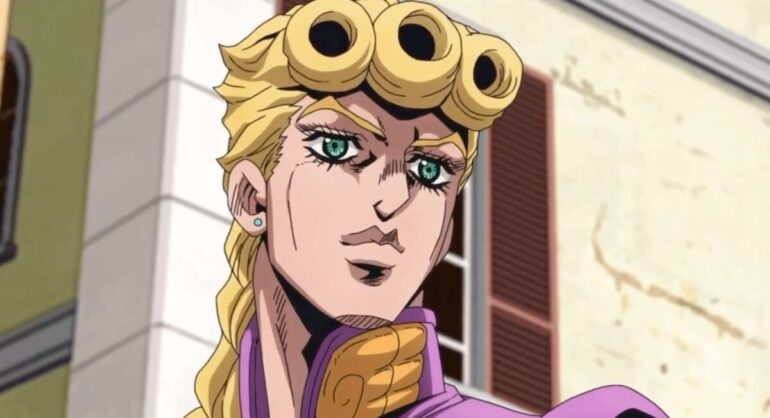There is so much that can be said about Hirohiko Araki’s iconic work Jojo’s Bizarre Adventure. Ever since its initial manga release in 1987, it has captured the imaginations of anime fans worldwide and has become a topic for vast discussions within the fandom, whether it be commenting on its status as a staple of modern pop culture or its more unusual controversies.
The story itself is currently split into eight separate story arcs, each following a protagonist with the nickname ‘JoJo’ as they go on their own bizarre adventure. The nickname itself is an abbreviation of each of the character’s real names e.g. Jonathon Joestar, or Jolene Cujoh. However, one of the more interesting aspects that this show plays around with is something that many of us struggle with: masculinity. Whereas most comics or television shows will play it straight, Jojo’s has a little bit more fun with it.
Some spoilers ahead for Jojo’s Bizarre Adventure.

Most obviously, there is the character’s aesthetic. The characters are either muscular heavyweights that could give Arnold Schwarzenegger a run for his money or slimmer, leaner, pretty boys. They both represent sides of the same coin in terms of traditional ideal masculinity as far as looks go. However, that is as far as the show goes with this concept. Whether it be in their fashion choice or even their body language, the rest of the character’s appearances fly in the face of what many people would perceive as conventional masculinity.
In a show where extravagance rules and any hint of mundanity is thrown out the window, it would only make sense that each of the main characters had their own pose. Each of these ‘Jojo poses’ is iconic in their own right, but also have interesting roots. Araki has been very vocal about his love for the fashion industry, and some of this is reflected in the character poses: the big bad of the story, Dio Brando, and the protagonist of part two, Joseph Joestar, each have poses which take direct inspiration from the works of American fashion artist Tony Viramontes. To have these buff men pose in the same way as fashion models challenges ideas of what it means to be manly, even if it is only in a small way.
Staying in the same vein of fashion, a lot of the outfits the characters wear can trace its roots back to the industry’s influence. While male modern fashion is quite frankly plain, with a predominant focus on suits and jeans, Araki’s characters jazz it up, whether it be the suits – the gangster’s flashy and colorful attire in part five and Caesar Zeppeli’s outfit from part two are heavily inspired by motifs of Antonio Lopez – or just giving some of the characters straight up skirts. In fact, the fashion influences are so strong, that Araki has even collaborated with Gucci on a one-shot story. Fashion has always been one of the most avant-garde industries and this is reflected in the characters designs: much like the characters themselves, they are bold and challenging.
Even the emotions of the characters go against ideals of traditional masculinity. Most films and television shows would have men acting stoic or only showing a glimpse of emotion in the face of grief. Even Jojo’s isn’t exempt from this – Jotaro proclaiming to his nemesis Dio “I can’t beat the shit out of you without getting closer” after one of his companions is murdered in part three is a strong example. However, one of the most gut-wrenching scenes in this show is in part two. Joseph Joestar finds out his companion Caesar Zeppeli has died in battle and the way the scene is shot, from the swelling orchestral strings to the characters reacting, is heart-breaking.
The scene doesn’t show Joseph being stoic and strong in the face of adversity. In fact, it is the female character present, Lisa Lisa, who puts on the biggest show of stoicism and Joseph condemns her at first for not showing any emotion. Though he goes on to avenge his friend’s death, the episode concludes on Joseph’s animalistic cries at his friend’s resting place. There are plenty of other examples of men going against the image of manliness in terms of emotion – though he doesn’t shed a tear, part five’s Giorno Giovanna buries his companion Narancia in flowers.
It even takes badassery to another level, with the characters throughout the show having a strong sense of confidence in everything they do. Part five of Jojo’s Bizarre Adventure focuses on the Italian mafia, and as may be expected in gangster stories, there is a scene where the protagonists have to torture someone for information. Now, in films like Goodfellas or Casino, the torture scenes are brutal displays of violence and aggression. However, though the torture scene in Jojo’s is far from pleasant, what do the protagonists do? They dance. For me, this scene completely encapsulates Jojo’s Bizarre Adventure’s view on masculinity.
Instead of going straight for the boring typical views of stoicism and strength, it takes the more flamboyant and extravagant approach, glorifying aspects that go against the ideals of stereotypical masculinity. These are men who are just as likely to kick ass while looking good in a skirt. They have ‘manly’ strength and confidence, but the emotional flexibility to experience grief and sadness. Whether it be in the clothes they wear or the way they carry themselves, the characters of Jojo’s Bizarre Adventure take ideals of masculinity to a new – questionably bizarre but objectively awesome – level.
Some of the coverage you find on Cultured Vultures contains affiliate links, which provide us with small commissions based on purchases made from visiting our site. We cover gaming news, movie reviews, wrestling and much more.



